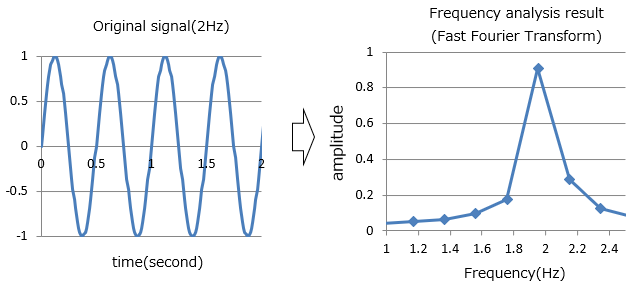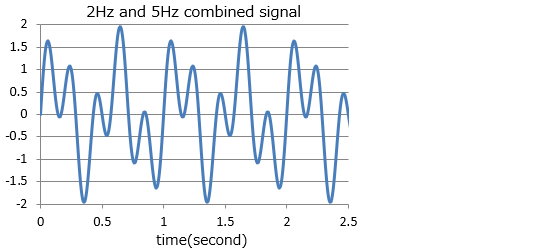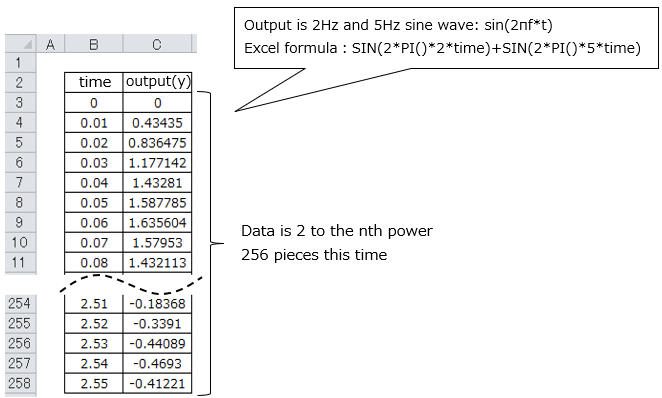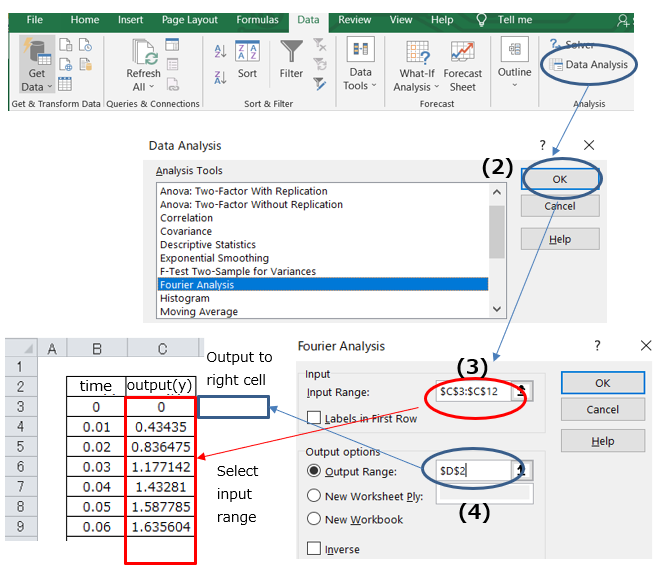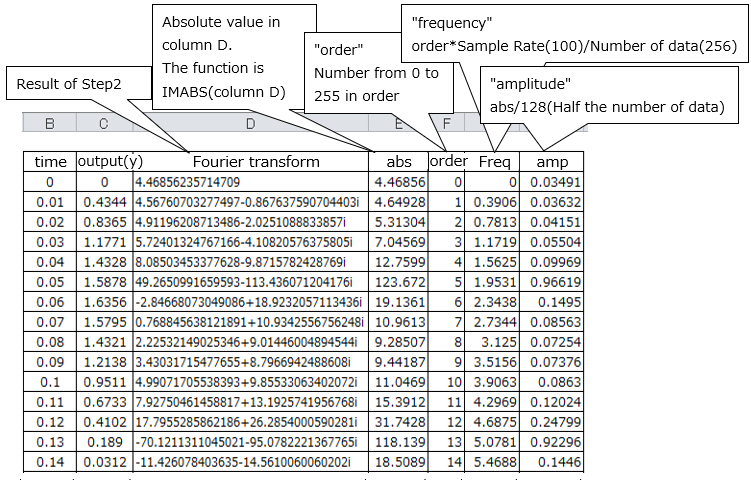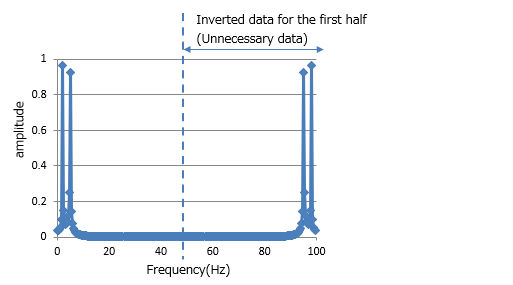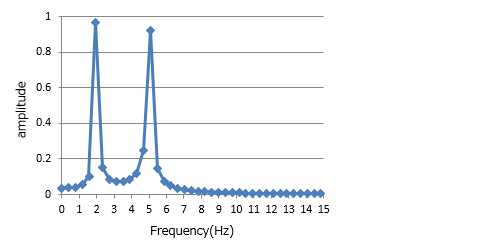Frequency analysis using Excel |
|||||||
・Frequency analysis ・Calculate the Fourier transform ・Detrending method ・Sampling theorem ・DC component ・Bilinear transform ・Floating point number ・Resolution, sampling period ・Fixed point number ・Digital Filter |
・In Japanese
■What is frequency analysis?
Frequency analysis is also called spectral analysis by analyzing which frequency component waveform is included in time series data. The Fourier transform is used as the method.
This section describes the frequency analysis method using the Fast Fourier Transform. The image when the fast Fourier transform is performed is as follows.
■How to analyze frequency using Excel
Here, I will explain how to use Excel as a frequency analysis using the Fast Fourier Transform (FFT).
As a subject, I will deal with a signal in which 2Hz and 5Hz are combined as shown below. ■Techniques for frequency analysis:Window function
When analyzing frequencies, the results may differ depending on where the data is separated.
Since the Fourier transform regards the data as one period when it is divided, for example, when the data is divided as shown below, it is treated as a periodic function whose value changes suddenly even though it is originally a continuous periodic function.
|
|
|||||
